Legumes are a family of vegetables that include peas, beans, and lentils. They are exceptionally high in fiber, protein, and antioxidants, and as such, they’re very popular ingredients for healthy cooking.
Vegetarians and vegans use legumes as one of their key sources of amino acids, but omnivores can easily incorporate legumes into their diet, too.
We’ve ranked the ten best sources of legumes available on the market, plus looked into the latest science on the benefits and drawbacks of legume as a health food.
Research
Rankings
1. Bob’s Red Mill Red Lentil Beans

Bob’s Red Mill is widely known as one of the top manufacturers of cereals and dried goods for health-conscious consumers, and their red lentil beans live up to this reputation.
Bob’s Red Mill Red Lentil Beans are an excellent source of fiber: just one serving has over half of your recommended daily intake of fiber.
On top of this, the content of essential minerals like zinc, iron, and magnesium is quite high, which makes these our top pick.
2. Camellia Black Eye Peas
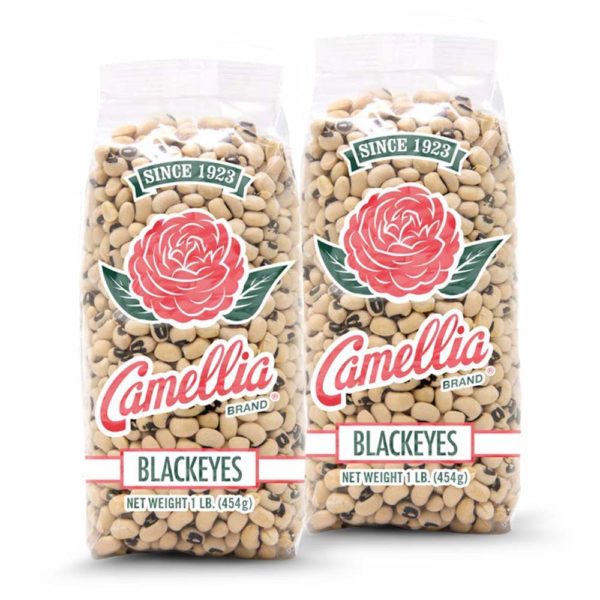
Camellia Black Eye Peas have a mild earthy flavor. They’re a lot closer to a bean than a pea when it comes to flavor and texture, so if you’re tired of the usual field peas or chickpeas, give blackeyes a try.
Unlike true dried beans, though, these can be cooked up in only an hour.
3. Yupick Organic Green Lentils
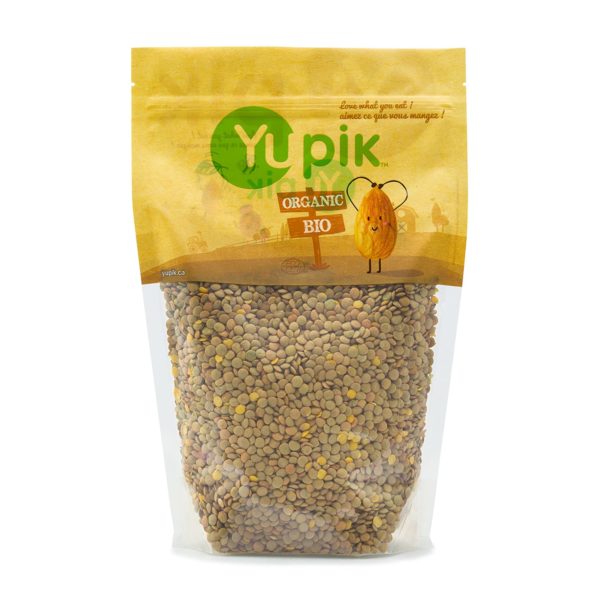
Yupick Organic Green Lentils cook up firm and flavorful, and have excellent fiber and protein content.
The fact that these lentils are organically certified makes them an even better choice of legume if ingredient purity and quality is important for you.
4. Timeless Natural Food Green Lentils

Timeless Natural Food Green Lentils are organically certified and grown in Montana, so they’re great option for a health-oriented legume.
Like other green lentils, these legumes are differentiated from red lentils thanks to their ability to retain firmness and texture in soups and stews, and when cooked, they take on a medium brown color.
If organic produce is important to you, Timeless Natural Food Green Lentils is the way to go.
5. Camellias Louisiana Red KidneyBeans
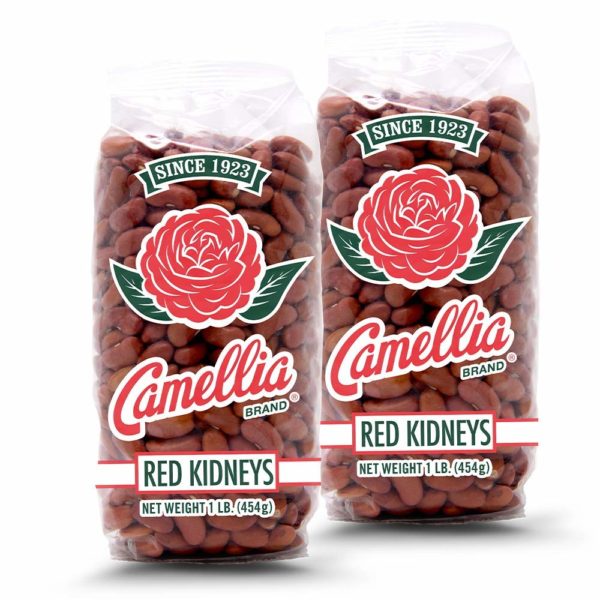
Camellia’s Red Kidney Beans are creamy, hearty Southern cooking favorite that’s low fat and packed with nutritional value.
These gluten-free, non-GMO dry beans are a great source of protein for vegans and vegetarians.
Like any dried beans, you will have to cook them well in boiling water to make them edible. If you’ve got the time, it’s well worth it.
6. Palouse Brand Pardina Lentils

Palouse Brand Pardina Lentils are small brown lentils that come from a non-GMO verified source and are sold in three pound bulk bags.
For frequent users of lentils, they’re a great deal. Since true lentils cook up faster than other legumes, they are also great if you need to cook up a big meal in a pinch. Users love the unique flavor profile of these Pardina lentils.
7. Bentilia Organic Lentil Pasta
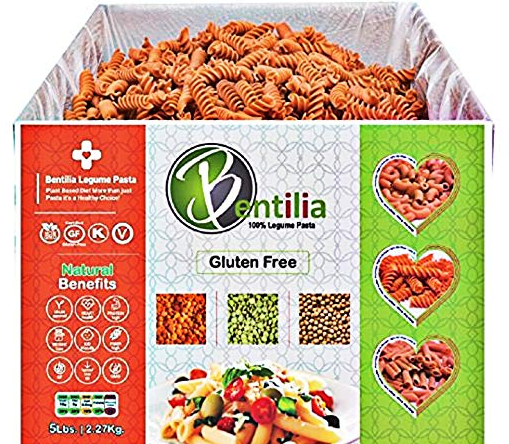
Bentilia Organic Lentil Pasta contains just one ingredient (red lentils), but the lentils are crushed and processed into a pasta noodle shape.
As a result, they cook up just like traditional noodles, making them easy to substitute into your diet if you are gluten free but still love pasta. The bulk package makes them great for family cooking, too.
8. Food to Live Green Peas

Food to Live Green Peas are high in fiber, fairly firm even when cooked, and tend to retain their flavor profile well in soups and stews.
This five-pound package is very popular among bulk users who don’t mind having a lot of the same kind of legume.
9. Modern Table Complete Protein Lentil Pasta
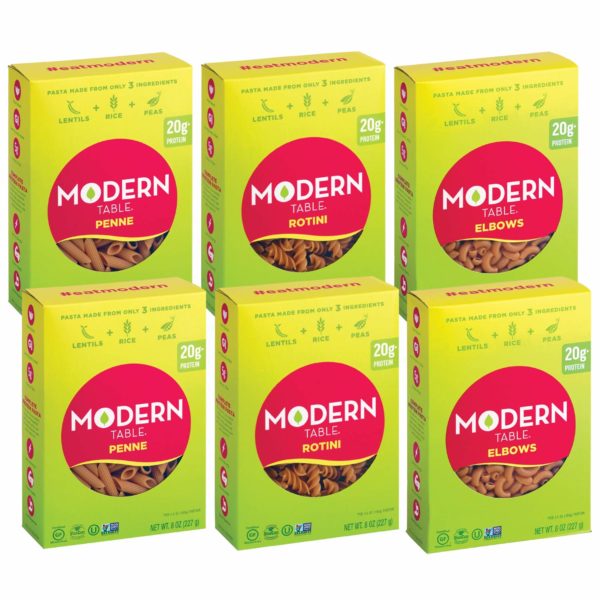
Lentils can be used to make a great pasta noodle if you are gluten-free, and that’s exactly what Modern Table Complete Protein Lentil Pasta does.
These pasta noodles have a complete amino acid profile, thanks to the use of both red lentils and pea protein when formulating the noodles. The only downside is the high sodium content—it’s not the best choice if you are on a low salt diet.
10. Tolerant Simply Legumes Organic Red Lentil Pasta
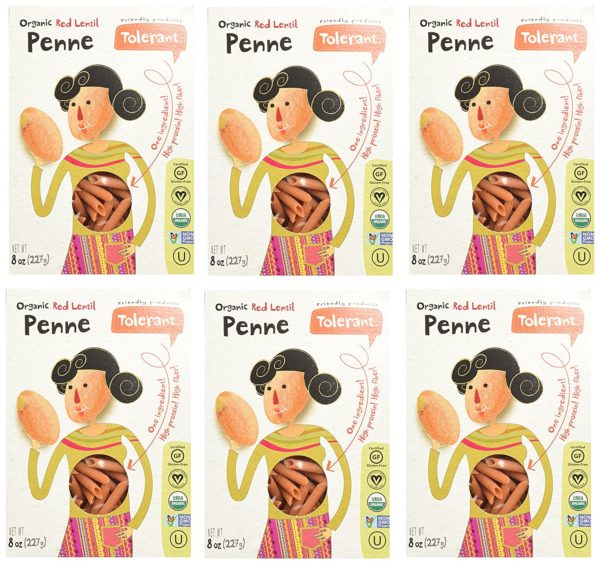
Tolerant Simply Legumes Organic Red Lentil Pasta is another lentil-based pasta noodle meant for people who are gluten free, or people who want more fiber and protein in their noodles.
Unfortunately, Tolerant Simply Legumes don’t quite hold up as well to cooking. They are a little more dry and tend to form clumps easily after cooling down, so unless you’re going to eat them right away, another option might be better.
Category winners
Best legumes overall: Bob’s Red Mill Red Lentil Beans
Bob’s Red Mill uses heritage seeds to grow these red lentils, which gives them a distinctively sweet and light flavor. These are our favorite for soups, stews, and side dishes thanks to the great taste and versatility of these lentils.
Best legumes for salads: Yupik Organic Green Lentils
The firm texture of green lentils make them especially well-suited for salads, and Yupik Organic Green Lentils makes the best green lentils on the market right now. They’re organically certified and hold up their texture after being cooked, even when mixed with other ingredients in a salad.
Best organic legumes: Yupik Organic Green Lentils
Free from synthetic pesticides and herbicides, Yupik Organic Green Lentils are the best option out there for organic legumes. If purity and quality matter to you, this should be your choice.
Best bulk legumes: Palouse Brand Pardina Lentils
Going through a lot of legumes on a regular basis? Palouse Brand Pardina Lentils should be your choice. These bulk-packaged lentils are American-grown and don’t sacrifice on quality.
Best legumes for weight loss: Bob’s Red Mill Red Lentil Beans
High in protein and fiber, and low in carbs and fat, red lentils are the perfect staple food for weight loss. Bob’s Red Mill makes some of the best lentils around, making them our recommendation for weight loss.
Best high protein legumes: Yupik Organic Green Lentils
Yupik makes excellent green legumes that are protein-dense and stay firm, even when cooked for a long time or when kept in the refrigerator for meal prep.
Who should buy legumes?
Legumes are great for individuals of all ages that want to add nutritious, low-calorie food to their diet. It is especially beneficial for vegetarians and vegans as they are high in plant-based protein. Legumes can also help those looking to lose weight as they are a very filling source of food.
High in fiber and in protein, lentils go very well with low carb and low fat diets. They’re great to swap in for pasta, rice, or other carb-heavy staple grains if you are trying to lose weight, control your blood sugar, or improve your heart health.
How we ranked
There are a variety of legumes on the market, including various beans, lentils, peanuts, and peas. For our rankings, we preferred pure products, like Timeless Natural over more processed products like Tolerant Red Legume Pasta. We also preferred dried legumes like Bob’s Red Mill, because they’re easier to store and cook.
In terms of the type of legume, we preferred lentils and beans over peas, like Food To Live, because they offered a little bit better nutrition. Peanuts and peanut butter were not included on the list, mainly because we consider them in their own rankings category.
We also chose not to include beans in cans due to the high levels of BPA resent in the aluminum lining. Furthermore, due to rampant pesticide usage in crops, we greatly prefer products like Bob’s Red Mill, which was certified organic, over no-name brands, or other well-known products that were not certified organic or pesticide-free.
Benefits
Legumes Provide Excellent Plant-Based Protein. Loaded with protein and fiber, legumes have a nutritional profile unlike most other foods. (1)
A single cup of cooked lentils contains 16 grams of fiber, 18 grams of protein, 40 grams of carbohydrate, and more than 10% of your recommended daily intake of vitamins B1, B3, B5, B6, zinc, manganese, iron, copper, folate, and phosphorus (2). All of this comes along with only 230 calories.
Legumes are one of the best sources of plant-based protein, and have the unique ability to fix nitrogen from the atmosphere, providing this essential component of amino acids.
Legumes are a very cost-effective source of nutrition. Because of this, legumes are a staple food in many developing countries.
The price of legumes is very low for the amount of protein they contain. They also store and travel well. (3)
Legumes Deliver Nutrients That Can Provide a Range Of Health Benefits. Properly prepared legumes can play a role in providing several important micro- and macro-nutrients.
Loaded with both soluble fiber and resistant starch, legumes can help increase the number of friendly bacteria in the gut. (4)
Soluble fiber and resistant starch both pass through the stomach and small intestine, reaching the colon virtually unchanged.
This can cause bloating and flatulence for some people, but one byproduct of this process is the formation of a short-chain fatty acid called butyrate, which is believed to reduce the risk of colon cancer and improve overall colon health. (5, 6)
Resistant starch and soluble fiber have been shown to reduce appetite, resulting in lower amounts of calories taken in daily. (7, 8)
Over the long-term, the satiation factor of starch and fiber could help with weight control. These effects also extend to blood sugar regulation, including the potential for improving insulin sensitivity after meals. (9, 10)
Eating legumes has been associated with a lower risk of developing heart disease (11) as well as dropping cholesterol levels. (12)
Other metabolic improvements have also been noted in those who eat legumes regularly, including lower blood triglycerides and blood pressure, both of which are important markers for higher risk of developing chronic diseases. (13, 14)
Side effects
Legumes also contain what are called “anti-nutrients,” which can inhibit the absorption of other nutrients in the digestion process. Let’s take a look at the three main anti-nutrients present in legumes.
The first is a category of proteins called lectins, which may have negative effects on the cells that line the digestive tract.
This family of proteins in legumes can account for as much as 10% of the protein content. (15)
Among the most-studied lectins, phytohemagglutinin is present in many legumes and found in high concentrations in red kidney beans. This substance is resistant to digestion and can be toxic in large amounts.
Poisoning has been reported only when red kidney beans were eaten raw or not cooked properly. (16)
Soaking kidney beans before cooking, combined with a minimum of ten minutes exposure to boiling water, degrades phytohemagglutinin to much lower levels. This effectively decreases any danger of toxicity from lectins. (17)
Smaller amounts of lectins are found in other legumes, but not enough to pose any threat to human health. Soaking and boiling all legumes will decrease phytohemagglutinin and other lectins to safe levels.
Another anti-nutrient, phytic acid, could inhibit the absorption of minerals. All edible plant seeds contain phytic acid (also called phytates), including legumes. This anti-nutrient is present for the purpose of preventing seeds from sprouting until conditions are right for growth.
Anti-nutrients called phytates can decrease the amount of zinc, iron and calcium absorbed after a meal, creating the potential of mineral deficiencies over time. (18)
The effects of phytates are only a concern during the meal in which they’re consumed; if you eat legumes for lunch but not for dinner, absorption of nutrients in the later meal will not be affected. (19)
People who regularly consume meat won’t have problems with this, because iron and other minerals found in animal foods like beef are readily absorbed, even if phytate is present. (20, 21)
If a diet is low in meat and high in legumes, absorption of minerals over the long-term can be an issue; this is often true for vegetarians and those who don’t have access to meat. (22)
Sprouting, soaking and preparation methods that utilize fermentation (such as tempeh or tofu made from soybeans) drop phytic acid levels and increase the availability of nutrients. (23, 24)
Finally, saponins resist digestion and may increase gut permeability. The integrity of the gut lining is vital to overall health; when it is compromised, leaky gut syndrome can develop, allowing undigested food particles to enter the bloodstream. (25)
The effect of saponins on cells lining the intestines is not clear; while there is no evidence to show saponins can damage the gut, researchers believe they could cause problems. (26)
Like the other anti-nutrients mentioned above, saponins are also decreased by sprouting, soaking and cooking. (27)
FAQ
Is quinoa a legume? Quinoa is more accurately described as grain rather than a legume. Despite this classification, quinoa offers many of the same health benefits as some foods in the legume family.
What are the healthiest legumes? Though all legumes are considered healthy to an extent, there are some types of legumes that are considerably more healthy than the rest. Determining which legumes are the healthiest options for yourself depends on your dietary needs and pre-existing health conditions.
A large number of legumes are linked to a reduction in blood sugar levels after eating, lower cholesterol levels, and even reduced rates of developing diabetes. Lentils have been linked to lower rates of diabetes, maintenance of cholesterol levels (more good, less bad), and high levels of fiber to promote easier digestion. Other popular healthy legumes include kidney beans, soybeans, and pinto beans.
Are black beans considered a healthy legume? Black beans are great food options because of their link to the reduction of cardiovascular conditions, lowered blood sugar levels post-consumption, and high levels of fiber and protein.
Are chickpeas a healthy legume? Chickpeas are one of the most nutrient-dense legumes available and are capable of playing a role in decreased cholesterol levels, lowered blood sugar levels, and improved gastrointestinal functioning.
What is the difference between a legume and a bean? There is no difference between beans and legumes because beans themselves are considered a member of the legume family. Basically, all beans are recognized as legumes, but not all legumes are beans.
What are the health benefits of legumes? Legumes provide great health benefits and plenty of nutrients to those who consume them. In particular, legumes are rich in micronutrients like iron, B vitamins, magnesium, zinc, phosphorus, and manganese. Legumes also have incredible levels of fiber and protein (about 8 grams each) and carbohydrates (about 20 grams) per serving while also boasting extremely low levels of fat per serving (less than 1 gram). Legumes are typically low in glycemic index and are, therefore, quality foods for diabetics as well.
Do legumes treat medical issues? Eating legumes not only provides several macronutrients and micronutrients to the diet, but they also have been tested as possible treatment sources for many medical conditions and symptoms.
In particular, some studies have proven a connection between eating legumes and reduction in Type II Diabetes symptoms (lower blood glucose levels), weight loss and reduction in body fat, reduced blood pressure and triglyceride levels, and lower cholesterol levels in the blood. When legumes are added to the diet, there are significant health benefits and very few, if any, associated risks (28, 29).
Are legumes unhealthy? The general consensus is that legumes are extremely healthy foods that provide plenty of health benefits to those who consume them. The major opponents of consuming legumes are those on a paleo diet, who insist that legumes are not as healthy as everybody makes them out to be. Many people following a paleo diet are against the consumption of legumes and assert that legumes are unhealthy since the nutrients received through legumes are easily attainable with other foods that are more natural, nutrient-dense, and healthier for the body.
Among these claims is the presence of lectins, which could cause inflammation in the gastrointestinal tract, high levels of carbohydrates that could cause weight gain when eaten in excess, and relatively low protein content as compared to meat products. That being said, the general consensus is that, when cooked properly and eaten in recommended serving sizes, legumes are extremely healthy food choices.
What legumes are sweet? Most legumes do not have a sweet flavor. If you are looking for legumes with sweet flavoring, the suggestion would be to eat peas, snap peas, sweet peas, or snow peas. While a majority of legumes are not sweet in their natural state, you could add flavoring or spices to provide a sweet flavor to the food.
Is coffee a legume? Though all beans are considered legumes, coffee beans are not actually beans themselves. Coffee beans are more accurately described as seeds from a fruit, similar to cherries, which would remove them from the bean and legume families.
What is the best way to introduce legumes into a diet? The best way to introduce legumes into a diet is by doing so slowly and selecting legumes that you already enjoy eating. Like any food, a rapid introduction into a diet can cause discomfort both mentally and physically (gastrointestinal upset, etc.).
However, it is not difficult to introduce legumes into the diet because there are a lot of options available. There’s a good chance that there are foods that are considered legumes that you already enjoy eating, and adding them to your diet or increasing your intake would be relatively easy and reduce the overwhelming feeling of starting a new diet. Aside from beans and peas, some common nuts, like peanuts, are considered legumes.
Does soaking legumes remove nutrients? When legumes are soaked and then cooked, there will be a mild loss of nutrients as a result. Some of the nutrients lost during the soaking process may include riboflavin, folic acid, calcium, and magnesium.
However, the reduction in nutrients as a result of soaking is not significant in the grand scheme of things, and soaking your legumes prior to cooking helps to reduce any lingering bacteria or parasites. If you are concerned about losing valuable nutrients when soaking and cooking legumes, there are some legumes that you can consume raw, though there are more risks associated with raw legumes.
Can I include legumes in my paleo diet? While there are many health benefits associated with legumes, those following the paleo diet typically avoid legume consumption for a variety of reasons. Many refer to the nutrients included in legumes, such as phytic acid and lectin, and conclude that legumes are not natural for the body and can result in health consequences.
Additionally, when compared to foods like meat products, the protein content in legumes lacks significantly. However, just because the paleo diet recommends not eating legumes does not mean that they are unhealthy.
How nutritional are legumes? Depending on the specific legume, the nutritional content varies greatly in terms of which nutrients are included and the values of each. A 100g serving of beans and lentils will contain various levels of micro and macronutrients, including approximately 5-10g of protein, 0-2g of fat, 4-12g of fibers, 10-4mg of magnesium and 80-300mg of potassium. Based on this data, it is clear that legumes are extremely nutrient-dense and provide admirable levels of micronutrients and macronutrients (30).
Are legumes grains? No, legumes are not considered grains. However, there are grain legumes, which are also called pulses. Common grain legumes include a variety of beans, chickpeas, peanuts, soybeans, and more.
Which legumes can you eat raw, and which can you eat cooked? Several legumes are edible raw, while others should be cooked before consumption for safety purposes.
Legumes such as peanuts and snap peas can be consumed without cooking. That being said, most legumes require cooking and carry great risks if eaten raw.
How do you cook legumes? The process of cooking legumes depends on the legume itself and your personal preference. While it is possible to skip the soaking process and replace it with basic rinsing, it is more common to slow soak or quick soak the legumes, with both processes lasting well over an hour each.
After the legumes have been soaked, it is time to drain and rinse them to begin the cooking process. To cook the legumes, add them to boiling water and let the legumes to simmer at a lower heat for at least 45 minutes.
How many servings of legumes do you need each day? When it comes to daily recommendations, legumes are often combined with nuts and seeds.
The general recommendation is that you consume legumes, nuts, and/or seeds at least 3 times per week, though a greater number of servings can prove more beneficial for health.
Many sources suggest eating legumes, nuts, or seeds at least twice per day to receive the most benefits and contribute to a more balanced diet.
What are the main differences between vegetables and legumes? The major difference between vegetables and legumes is the manner in which they are grown.
For the most part, legumes are considered seeds encapsulated by pods. On the contrary, vegetables are typically green or root products.
Why are legumes commonly eaten with rice? Legumes, such as beans, are often combined with rice in meals because of the health benefits provided by each of these foods. Rice provides a high carbohydrate count, and legumes have relatively high levels of protein.
When combined, rice and legumes create an extremely nutritious meal with protein, carbohydrates, and a combination of the minerals and vitamins included in each of the ingredients.
By eating rice with beans (or other legumes), you are pursuing a more balanced diet that will provide you with greater levels of macronutrient and micronutrient intake.
What are the differences between nuts, drupes, and legumes? Nuts are plant products that come wrapped in a hard exterior shell. Some examples of nuts include chestnuts, hazelnuts, and some types of walnuts. Drupes are similar to nuts in a sense but are surrounded by a fruit-type shell.
Some examples include almonds, peaches, and coffee. Legumes are usually found in the form of pods with multiple “seeds” within each pod. Some examples include beans, peas, and alfalfa.
How can you grow legumes in your garden? Growing legume plants requires some background knowledge. In general, a majority of legume plants are perennials, which means that the plant survives for several years. The most important part of planting legume seeds is making sure they are in direct sunlight for adequate growth during their life cycle. Generally speaking, growing legumes is easy.
Very little watering is required during the growth process, and you only really need to water them when they appear to need more water. Once the legumes are grown fully, you can harvest them and consume them at your leisure.
What are the benefits of growing legumes? Though you may not personally enjoy eating legumes, there are many benefits to planting legumes in your garden. The major reason some people grow legumes is that they have a natural ability to adjust the nitrogen levels in the garden’s soil. With such a feature, growing legumes makes it easier to grow other plants in the garden due to the ideal levels of nitrogen now in the garden.
Related articles
Recap
While anti-nutrients in legumes can negatively affect the absorption of minerals, the amount of these substances can be decreased dramatically by proper preparation methods—namely, cooking legumes all the way through, in boiling water.
Abundant fiber and protein in legumes can provide many health benefits, and for most people, this outweighs any potential problems. The density of nutrients like B vitamins, iron, and zinc in legumes are also excellent, which makes them a great source of all of these nutrients.
Considerable health benefits can be realized through including legumes in a varied diet based on whole and natural foods. Soak, sprout, boil and ferment beans, peas, lentils and other legumes to degrade anti-nutrients that can limit the body’s ability to absorb iron and other minerals and they can be an excellent part of a healthy diet and lifestyle.
For BodyNutrition’s #1 legume recommendation, click here.